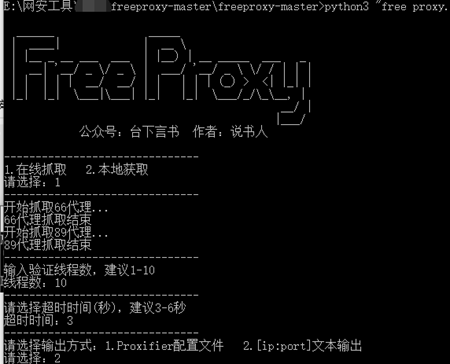

- #Pip3 proxy for mac os x#
- #Pip3 proxy install#
- #Pip3 proxy update#
- #Pip3 proxy password#
- #Pip3 proxy download#
Here is an example configuration file for a repository group:
#Pip3 proxy update#
When your certificate is proven to work, update your pip.conf. Run the following command: openssl verify This assumes the repository manager has already been set up to use SSL, so verify your certificate works. Additional configuration is necessary for the HTTPS client implementation to work. To set up the repository manager to serve HTTPS follow the configuration steps in Configuring SSL.Īlso, you can set up pip to use the certificate to enable SSL and fetch packages securely. This works for proxy, hosted, and group repositories. You can proxy Python packages over HTTPS to ensure a secure connection with a self-signed certificate.
#Pip3 proxy install#
To install a package from the repository: easy_install example-package SSL Usage for PyPI Repositories Index-url = If you prefer to configure easy_install for hosted ( pypi-internal) or group ( pypi-all) adjust the file accordingly. In this example index-url is set for a proxy repository:
#Pip3 proxy download#
Create a setup.cfg file which sets the index-url to the group, proxy or hosted repository from which you want to download packages. Download and install packages using easy_installĮasy Install lets you download, build, install, and update Python packages. That will print the configuration being used, and the source configuration files it came from. To verify your configuration is correct run "pip config list -v". pypirc file contains distutils, a default server used by PyPI that provides upload commands that stores assets and authentication information.
#Pip3 proxy password#
Add username and password values to access the repository manager. pypirc file below, specify the URL you want to deploy to the target hosted repository in the repository value. pypirc holds your credentials for authentication when hosting a PyPI repository. If you are authoring your own packages and want to distribute them to other users in your organization, you have to upload them to a hosted repository on the repository manager using a client tool such as twine. Upload to a hosted repository using twine Depending on your Python configuration you can manage your repository groups with pip.conf (or setup.cfg) to have all commands, such as search and install, run against your project.

pypirc file to reference packages stored in the repository manager. Once you have installed all necessary client tools from the Python Package Index, you can create and configure a. ĭepending on your preference for either twine, distutils, pip and setuptools, your proxy and hosted configuration will vary.
#Pip3 proxy for mac os x#
For Mac OS X and Microsoft Windows, download and install a Python version compatible with the repository manager from. The latest versions of such Linux distributions as CentOS and Ubuntu come packaged with Python and pip, a tool for installing and managing Python packages from the index.

Users will be able to browse and search assets against the remote, as mentioned in Browsing PyPI Repositories and Searching Packages. The proxy repository for PyPI packages provides a cache of files available on the index making access to components from the Python Package Index more reliable. The repository manager can access Python packages and tools from the remote index. Using should also work as long as redirects are maintained. The official Python Package Index Remote Storage URL value to enter is. To proxy a PyPI package index, you simply create a new pypi (proxy) recipe as documented in Proxy Repository, in detail. You can set up a PyPI proxy repository to access a remote package index. Otherwise, you will likely need to put -trusted-host additions at the end of many commands or further configure pip to trust your repository manager. If using pip with the repository manager, you should consider setting up your repository manager to use SSL as documented in Configuring SSL.


 0 kommentar(er)
0 kommentar(er)
